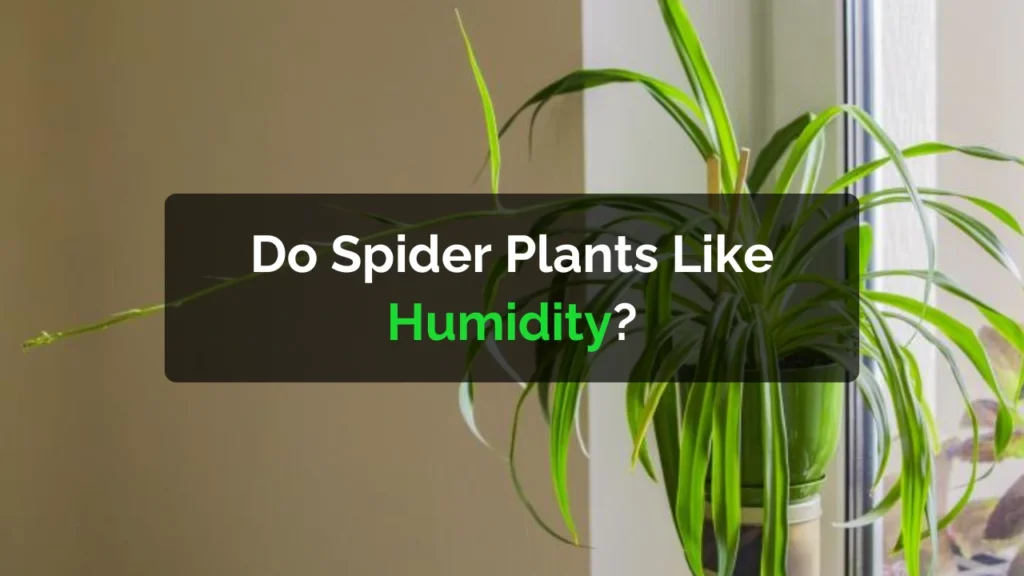Spider plants are one of the most adaptable and beginner-friendly houseplants. They can grow well in a range of indoor conditions, but humidity plays an important role in keeping them lush and healthy. Understanding how much humidity your spider plant needs helps you maintain the perfect indoor environment for its growth.
Ideal Humidity for Spider Plants
Spider plants naturally come from tropical and subtropical regions where humidity levels are moderate to high. Ideally, they prefer humidity between 40% and 60%. This range is comfortable for both the plant and most households.
In homes with very dry air, especially during winter, spider plants can show signs of stress such as brown leaf tips, curling leaves, or slower growth. On the other hand, excessively high humidity without good air circulation may cause fungal issues or root rot.
Signs Your Spider Plant Needs More Humidity
If your spider plant isn’t getting enough moisture in the air, you might notice:
- Dry or crispy leaf tips
- Leaves losing their bright green color
- Slower or stunted growth
- Brown edges despite proper watering
These are clear signals that your indoor air may be too dry for the plant’s liking.
How to Increase Humidity for Spider Plants
- Use a Humidifier:
A small room humidifier is the most effective way to keep humidity levels steady around your spider plant. - Pebble Tray Method:
Place a tray filled with water and pebbles under the pot. As the water evaporates, it naturally adds moisture to the air around the plant. - Group Plants Together:
Keeping several houseplants close to each other helps create a micro-humid environment through natural transpiration. - Misting Occasionally:
Lightly misting your spider plant once or twice a week can offer a quick humidity boost, but avoid overdoing it to prevent fungal growth. - Move Away from Dry Air Sources:
Keep your spider plant away from heaters, vents, or fans that can dry out the air too quickly.
Can Spider Plants Tolerate Low Humidity?
Yes, spider plants can tolerate low humidity for short periods since they are adaptable. However, long-term exposure to very dry air can cause leaf damage and poor growth. Maintaining a balanced environment with moderate humidity will help the plant stay vibrant and produce healthy offshoots.
Best Indoor Conditions for Spider Plants
To keep your spider plant thriving, aim for:
- Temperature: Between 60°F and 75°F (16°C to 24°C)
- Light: Bright, indirect sunlight
- Humidity: Around 40% to 60%
- Water: Water when the top inch of soil feels dry
Following these conditions helps your spider plant remain lush and green year-round.
FAQs
Do spider plants like high humidity?
Spider plants enjoy moderate humidity, but extremely high humidity can lead to fungal problems if air circulation is poor.
Can I mist my spider plant daily?
It’s better to mist a few times a week rather than daily. Over-misting can make the leaves too wet and attract mold.
What happens if the air is too dry for my spider plant?
Dry air causes brown leaf tips and slow growth. Increasing humidity using a humidifier or pebble tray can fix this issue.
Should I use a humidifier near my spider plant?
Yes, a humidifier can help maintain ideal moisture levels, especially during the winter when indoor air is dry.
Are spider plants good for humid rooms like bathrooms?
Yes, spider plants thrive in bathrooms or kitchens where the air naturally stays more humid.
Final Thoughts
Spider plants appreciate a bit of humidity to stay green, healthy, and full. While they’re forgiving and can adapt to various conditions, keeping the air slightly moist helps prevent dry tips and dull leaves. With the right balance of humidity, light, and care, your spider plant will continue to grow beautifully and enhance your indoor space.





